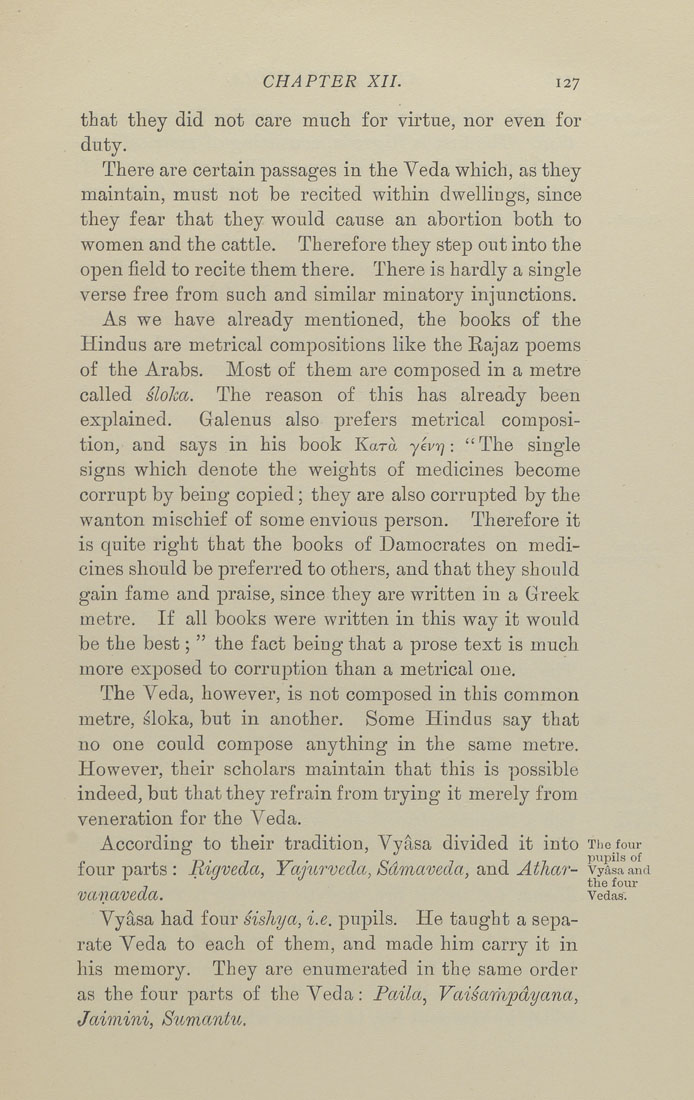Bīrūnī, Muḥammad ibn Aḥmad, Alberuni's India (v. 1)
(London : Kegan Paul, Trench, Trübner & Co., 1910.)
|
||
|
|
|
|
| Page 127 |

CHAPTER XII. 127 that they did not care much for virtue, nor even for duty. There are certain passages in the Veda which, as they maintain, must not be recited within dwellings, since they fear that they would cause an abortion both to women and the cattle. Therefore they step out into the open field to recite them there. There is hardly a single verse free from such and similar minatory injunctions. As we have already mentioned, the books of the Hindus are metrical compositions like the Rajaz poems of the Arabs. Most of them are composed in a metre called sloka. The reason of this has already been explained. Galenus also prefers metrical composi¬ tion, and says in his book Kara yivr]: " The single signs which denote the weights of medicines become corrupt by being copied; they are also corrupted by the wanton mischief of some envious person. Therefore it is quite right that the books of Damocrates on medi¬ cines should be preferred to others, and that they should gain fame and praise, since they are written in a Greek metre. If all books were written in this way it would be the best; " the fact being that a prose text is much more exposed to corruption than a metrical one. The Veda, however, is not composed in this common metre, sloka, but in another. Some Hindus say that no one could compose anything in the same metre. However, their scholars maintain that this is possible indeed, but that they refrain from trying it merely from veneration for the Veda. According to their tradition, Vyasa divided it into Tiie four four parts : Rigveda, Yajurveda, Sdmaveda, and Athar- vyasaand ., ' the four vanaveda. vedas. Vyasa had four sishya, i.e. pupils. He taught a sepa¬ rate Veda to each of them, and made him carry it in his memory. They are enumerated in the same order as the four parts of the Veda: Paila, Vaisam2odyana, Jaimini, Sumantu. |
| Page 127 |







